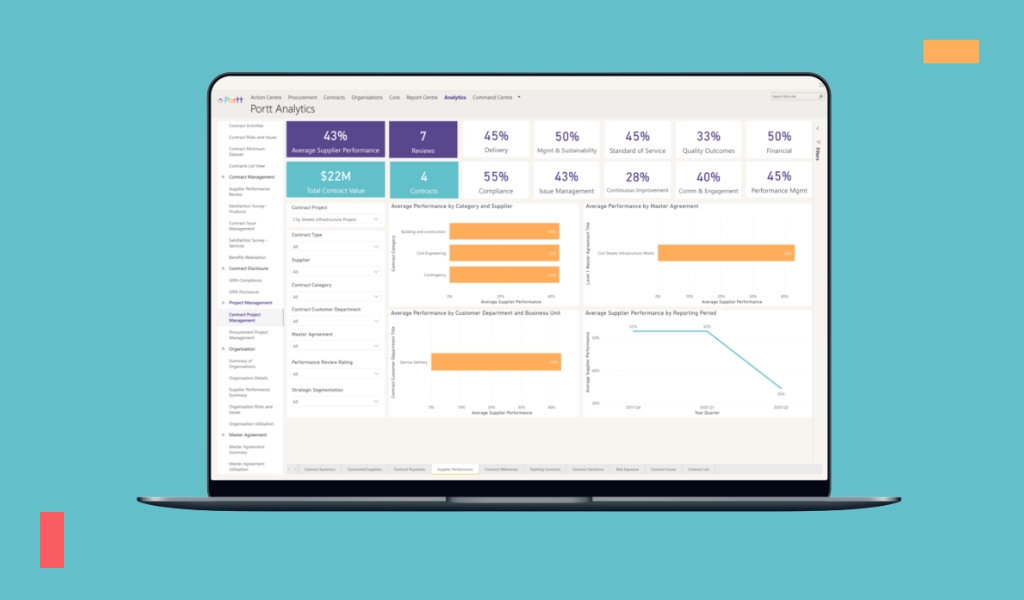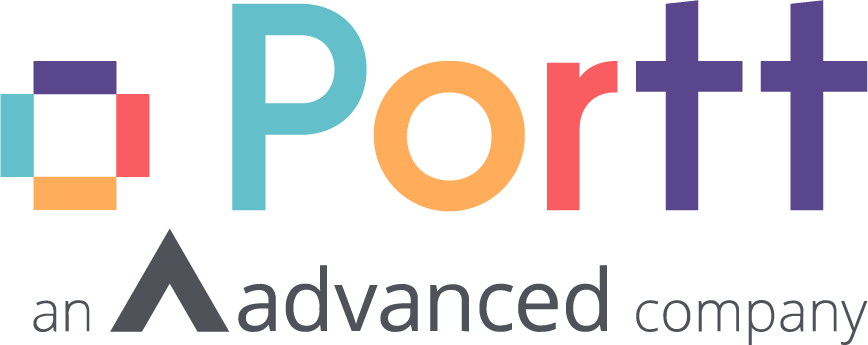
Weathering the storm of geopolitical change is a never-ending challenge for procurement leaders.
We can spend as much time as we like improving internal processes, nailing our onboarding workflow and tweaking our sourcing criteria – all for the parameters to shift and leave us scrambling to catch up.
This article demonstrates the practical ways procurement software can mitigate the risks of geopolitical upheaval and help businesses stay agile in the face of unexpected change.
The importance of data and visibility
Successful supplier relationship management comes down to one thing: visibility.
Visibility over your supplier, including supplier risks, KPIs and performance allows you to make better, data-driven business decisions and adapt to shifts in the global procurement landscape – without the need for costly manual analysis.
Accessing real-time supplier data and reports enables you to pivot and update your procurement strategies as needed.

Procurement software’s role
When geopolitical forces shift procurement parameters, the people holding the data will be on top – and smart procurement software is the key to gaining that data.
Procurement software is the secret to gaining visibility over your procurement pipeline and supplier lifecycles.
Here are 3 practical ways procurement software steadies the boat during geopolitical storms.
#1. Instantly determine supplier risk
Solution: Supply chain risk management software
What: Supplier risk management software provides full visibility over your entire supplier base – your suppliers and your suppliers’ suppliers. It enables you to continually check supplier risk and ascertain whether your suppliers have become a liability.
It provides real-time data on key risk factors including:
- Financial performance
- Ownership structures
- Potential weaknesses
- Modern Slavery risks
- Human Trafficking risks
- ESG factors
How:
- Supply chain risk software identifies and evaluates supplier risk scores and turns them into clear, measurable risk ratings.
- Capture and share data in real time and allow collaboration with suppliers
Case Study: The war in Ukraine
The ongoing conflict in Ukraine has led to global supply chain challenges – partly due to the disproportionate impact on trade caused by Russia’s role as a primary exporter of crucial commodities including crude oil.
“The principal reason that Russia plays
above its weight is that it is a major exporter
of some of the world’s most important commodities”
– Deloitte
Sanctions against Russia and the resulting export drops have impacted global suppliers – even those not directly in business with Russian exporters.
Supplier risk management software can assess a supplier’s financial viability and determine whether its ties with Russia will impede its ability to deliver on promises.

#2. Supplier classification
What: Personalised supplier classification functions help procurement teams model and tier their supplier base. Tiering can be based on business priorities like government procurement criteria, local procurement targets or other goals.
How:
- Tier your supplier base according to your business’s priorities and metrics.
- A classifications library then automates the plans, workflows and tasks to be completed for each supplier based on its classification.
Case Study: Local procurement post-Covid-19
The pandemic of 2020 saw increased localisation and regionalisation of procurement in response to global supply chain challenges. Despite a relative return to normalcy, many procurement leaders continue to source locally after re-examining their procurement footprint during the pandemic.
Supplier classification capabilities can help procurement teams make faster, smarter procurement decisions by tiering suppliers based on location.
#3. Automated recurring supplier assessments
Solution: Supplier due diligence software
If the never-ending stream of “unprecedented events” of the past few years have taught us anything, it’s to expect the unexpected.
This highlights one crucial (and often neglected) aspect of procurement: ongoing supplier assessment.
After the initial due diligence processes and pre-onboarding assessments are complete, suppliers are often left somewhat to their own devices with only ad hoc or minimal assessment throughout the rest of the supplier lifecycle.
What: Improve supplier relationships and capabilities with logical systems that drive continuous process improvements.
How:
- Create category-based scorecards that enable relevant supplier comparison
- Set recurring reminders and tasks that encourage ongoing positive change
- Use existing supplier data on file to inform contract renewal and future procurement events across your organisation. No need to repeat time-consuming risk assessments
- Monitor supplier health and capabilities on an ongoing basis, with supplier risk profiles and scores that automatically adjust based on assessment responses
- With all supplier metadata stored on a single platform, you can filter suppliers according to the parameters required by each procurement event.
Case Study: Modern Slavery risk
Expectations around supply chain accountability have never been higher, especially in the area of modern slavery. Enabling ongoing monitoring of your entire supply chain is therefore critical – it’s not good enough to claim ignorance of modern slavery in your supply chain, no matter how distantly linked to your business.
Suppliers change, and their suppliers change too.
By using automated supplier due diligence and management software to continually assess your supply chain, you can avoid any nasty surprises and prevent undue reputational and financial damage to your enterprise.

Staying agile in 2023 and beyond
Modern procurement is complex, and it’s only going to get more so – with increasing focus on ESG and ongoing global impacts on supply chains, businesses need to shore up their procurement processes to ensure resilience and agility against unforeseen interruptions.
Implementing game-changing procurement software is the simplest way to do this.
- It delivers data straight to those who need it – detailed analytics and real-world reporting puts valuable data in front of procurement teams, allowing them to make smarter decisions.
- It automates recurring tasks – automated workflows ensure that nothing is missed while saving time, energy and money on regular tasks.
- Ensures a seamless supplier relationship – easy collaboration and greater transparency create accountability and strengthen supplier relationships.
The bottom line? More free time for your procurement team to spend optimising performance, more brainpower to spend on improving your bottom line and greater flexibility in adapting to change.
Get in touch to learn more about Supplier Relationship Management or book a demo today



